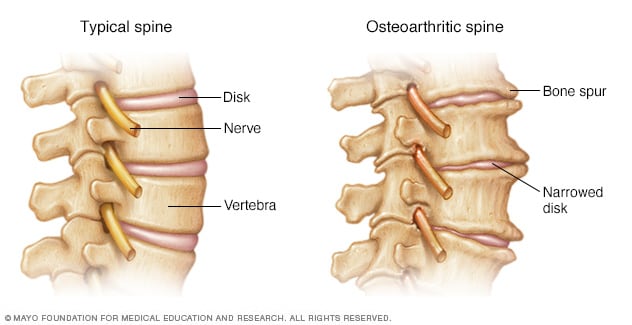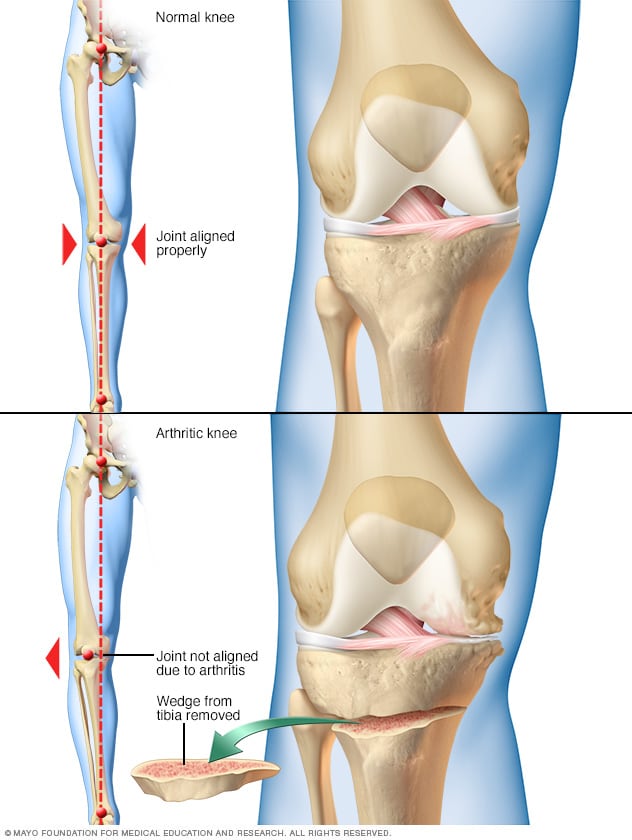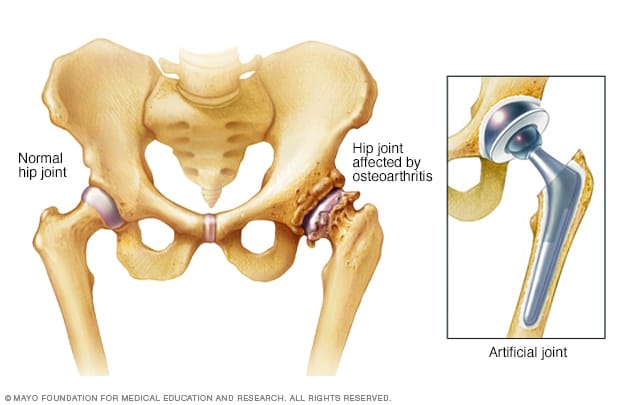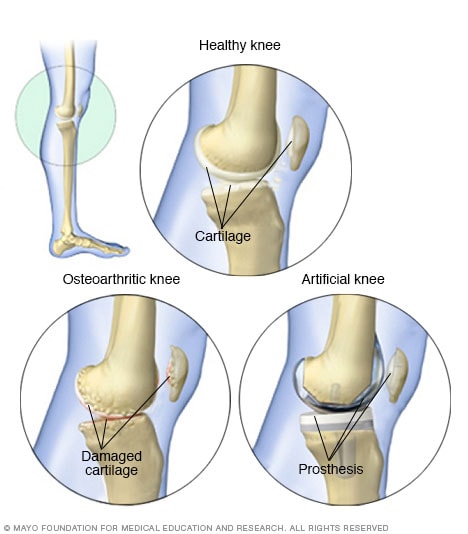Osteoarthritis is the most common form of arthritis, affecting millions of people worldwide. It occurs when the protective cartilage on the ends of your bones wears down over time. Although osteoarthritis can damage any joint in your body, the disorder most commonly affects joints in your hands, knees, hips and spine.
Symptoms
-

Fig: Osteoarthritis of the spine
Osteoarthritis symptoms often develop slowly and worsen over time. Signs and symptoms of osteoarthritis include:
- Pain. Your joint may hurt during or after movement.
- Tenderness. Your joint may feel tender when you apply light pressure to it.
- Stiffness. Joint stiffness may be most noticeable when you wake up in the morning or after a period of inactivity.
- Loss of flexibility. You may not be able to move your joint through its full range of motion.
- Grating sensation. You may hear or feel a grating sensation when you use the joint.
- Bone spurs. These extra bits of bone, which feel like hard lumps, may form around the affected joint.
Causes
Osteoarthritis occurs when the cartilage that cushions the ends of bones in your joints gradually deteriorates. Cartilage is a firm, slippery tissue that permits nearly frictionless joint motion.
In osteoarthritis, the slick surface of the cartilage becomes rough. Eventually, if the cartilage wears down completely, you may be left with bone rubbing on bone.
Treatment
Currently, the process underlying osteoarthritis cannot be reversed, but symptoms can usually be effectively managed with lifestyle changes, physical and other therapies, medications, and surgery. Exercising and achieving a healthy weight are generally the most important ways to treat osteoarthritis. Your doctor may also suggest:
Medications:
- Acetaminophen.
- Nonsteroidal anti-inflammatory drugs (NSAIDs).
- Duloxetine (Cymbalta).
Therapy
- Physical therapy.
- Occupational therapy.
- Tai chi and yoga.
Surgical and other procedures:
-

Knee osteotomy
-

Artificial hip
-

Fig : Osteoarthritic knee
If conservative treatments don’t help, you may want to consider procedures such as:
- Cortisone injections. Injections of corticosteroid medications may relieve pain in your joint. During this procedure your doctor numbs the area around your joint, then places a needle into the space within your joint and injects medication. The number of cortisone injections you can receive each year is generally limited to three or four injections, because the medication can worsen joint damage over time.
- Lubrication injections. Injections of hyaluronic acid may offer pain relief by providing some cushioning in your knee, though some research suggests these injections offer no more relief than a placebo. Hyaluronic acid is similar to a component normally found in your joint fluid.
- Realigning bones. If osteoarthritis has damaged one side of your knee more than the other, an osteotomy might be helpful. In a knee osteotomy, a surgeon cuts across the bone either above or below the knee, and then removes or adds a wedge of bone. This shifts your body weight away from the worn-out part of your knee.
- Joint replacement. In joint replacement surgery (arthroplasty), your surgeon removes your damaged joint surfaces and replaces them with plastic and metal parts. Surgical risks include infections and blood clots. Artificial joints can wear out or come loose and may need to eventually be replaced.

Post a comment